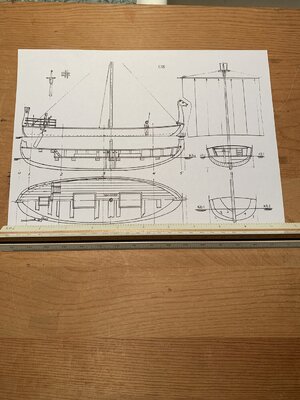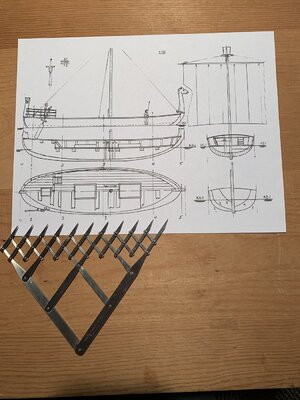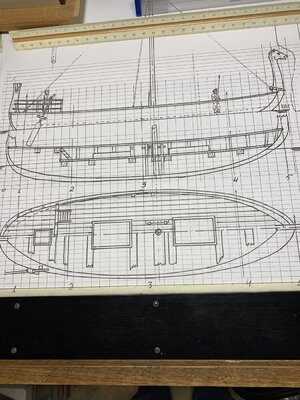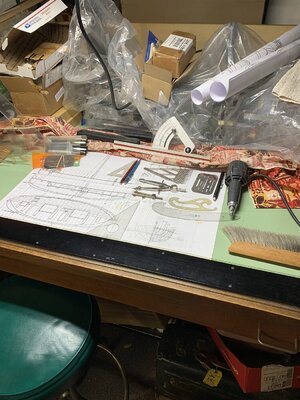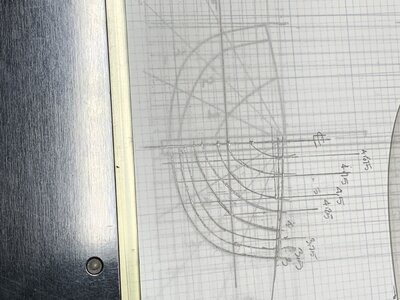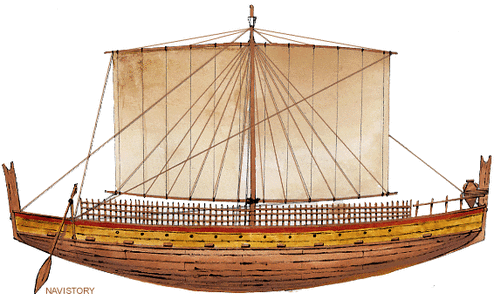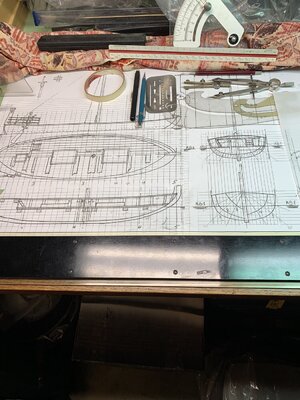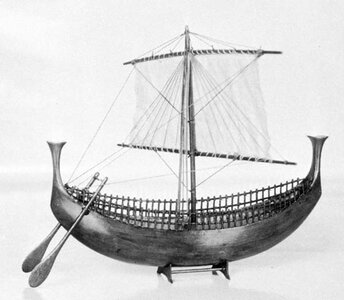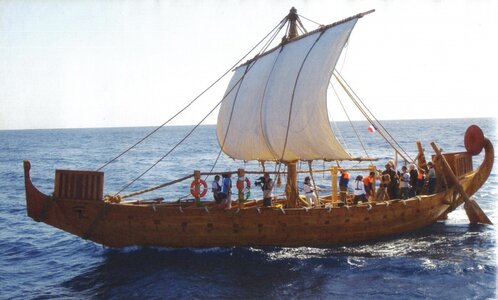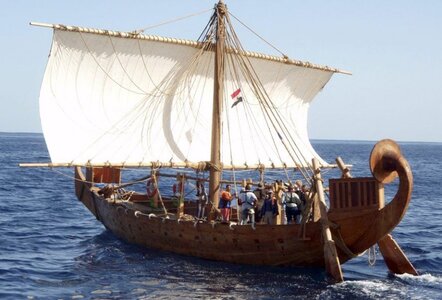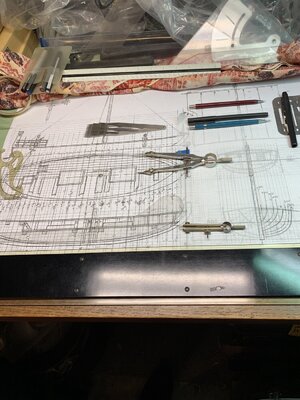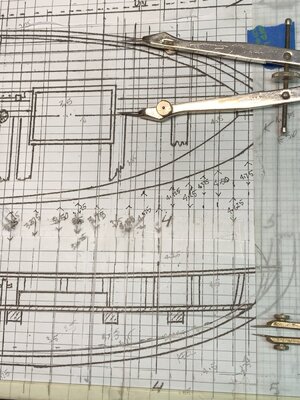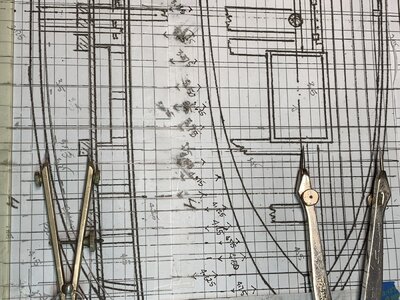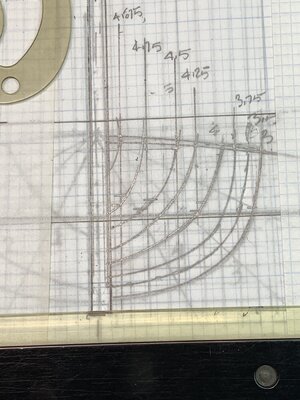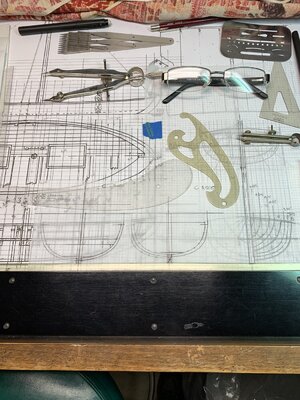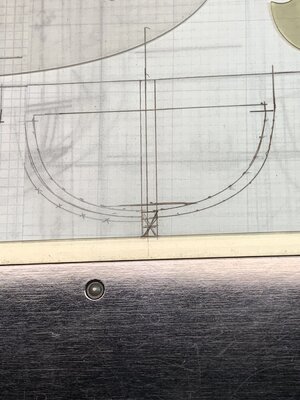With some care for alignment, a sharp blade and metal straight edge I cut the plan sheet to move the body plan from left of the body plan and strakes lines, upwards and the shear plan elevation down to align horizontally with the body plan's lines.
View attachment 277457
With this repositioning I will be better able to draw the frames/bulkheads for the hull mold planking with added notches inboard for longitudinal wales matching the gentle curve of the deck and deck beams.
Aside from this I have surfed the net for the most inclusive and agreeable images of the yards and sail rigging. As the only known aspect of these old ships has been taken from inscribed "sketches" in monuments or on stones; or from the painted images on old pottery there is a lot of disagreement in what is seen: both from the artists lack of knowledge, intended distortions or omissions to present what was desired, and/or lack of scale wherein smaller details cannot be shown on the painted/glazed surfaces. A few of the more inclusive images that I have found to blend into my own model I will share a few:
View attachment 277458
the model shows most of the rigging but not in origin or termination details.
View attachment 277459
A contemporary reconstructed sailing experiment does give a few additional hints in this port view and the next from more abaft downwind
View attachment 277460
one thing that emerges is the large cluster of blocks around to upper mast for the lines that support the yards and may be considered as brail lines on the back of the sail with the brail lines.
The "ornamentation" of the stem and stern extensions has yet to be settled upon as well as the "safety fencing" on both mid-ships gunnels (rope or woven wicker).
I enjoy the investigation while preparing for departure into construction.
Our best wishes to all in SoS who celebrate the Christmas and holidays of this time of year so close to the now past solstice. Rich
